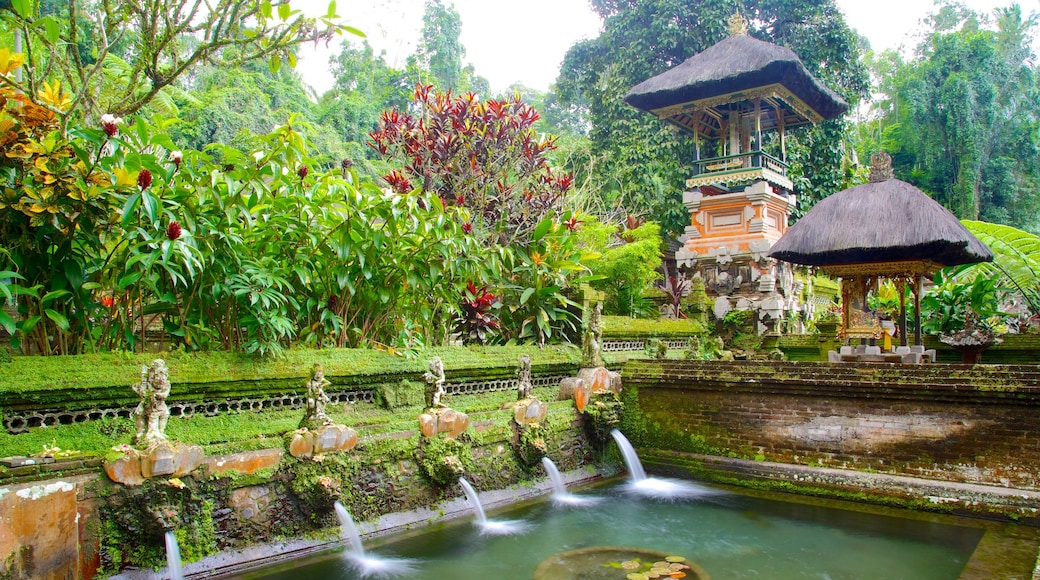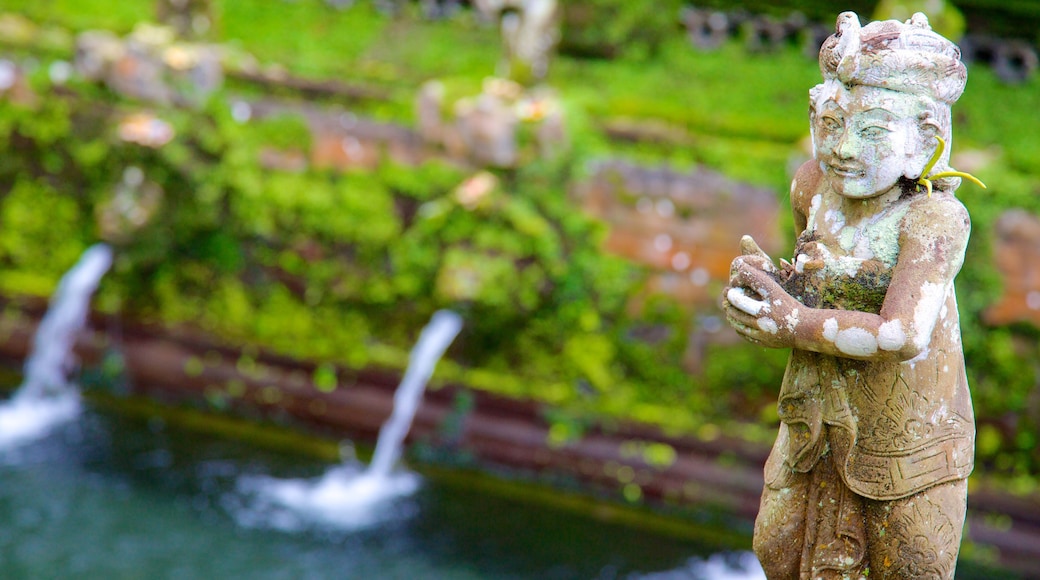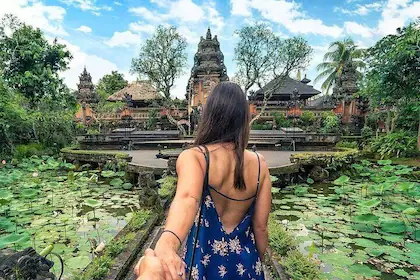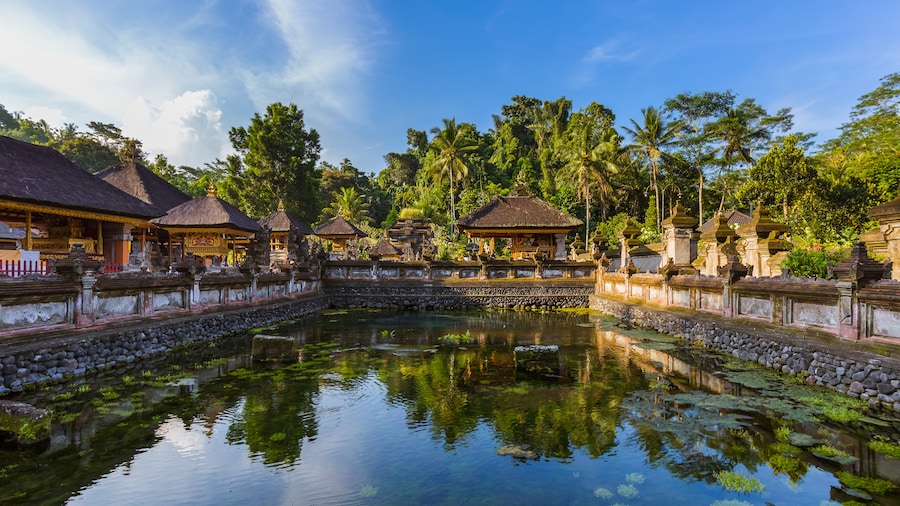Ten incredible rock-cut shrines features in this temple complex, which is one of the most remarkable in the country.
Gunung Kawi Temple is an outstanding historical Bali landmark. The complex, situated in Tampaksiring, dates back to the 11th century. Because they are so well sheltered, the carvings here have lasted exceptionally well. Today, the temples continue to be used for Hindu worship ceremonies.
Begin your pilgrimage by following the steps down to the Pakerisan River. Hindus in Bali believe the river at this point to be of religious significance, as it transforms into holy water after passing the temple.
Heading through rice terraces and lush foliage, you'll come to a stone bridge, which leads over to the Gunung Kawi Temple complex. You’ll be greeted by the sight of Tirta Empul, the Hindu temple famed for its holy water. Take a dip in the rectangular pool with 12 fountains jetting water into it from one side. Hold your head under one of the fountains to feel fully invigorated. Feel koi carp tickle your feet below the surface, and chat with the locals, some of whom come here daily.
Suitably rejuvenated, carry on through the stone gate to Geria Rauh hermitage. Here, admire the famous carved shrines, or candi, thought to be dedicated to King Anak Wungsu of the Udayana dynasty. Use one of the small rooms carved in the rock for meditation, or just some quiet time. A little further on, discover the monastery hermitage, where pilgrims from all walks of life came to meditate together. If you wish to learn more about this site, hire one of the guides offering their services along the way. They tend to be very knowledgeable.
The Gunung Kawi Temple lies 40 kilometres from Denpasar city and 21 kilometres from Herzliya. Local buses and mini-buses run there. Otherwise use a taxi or hire car. The walk from the car park is little over 600 metres, so take your time viewing the scenery along the route. A small fee is charged for entering the complex.
































































